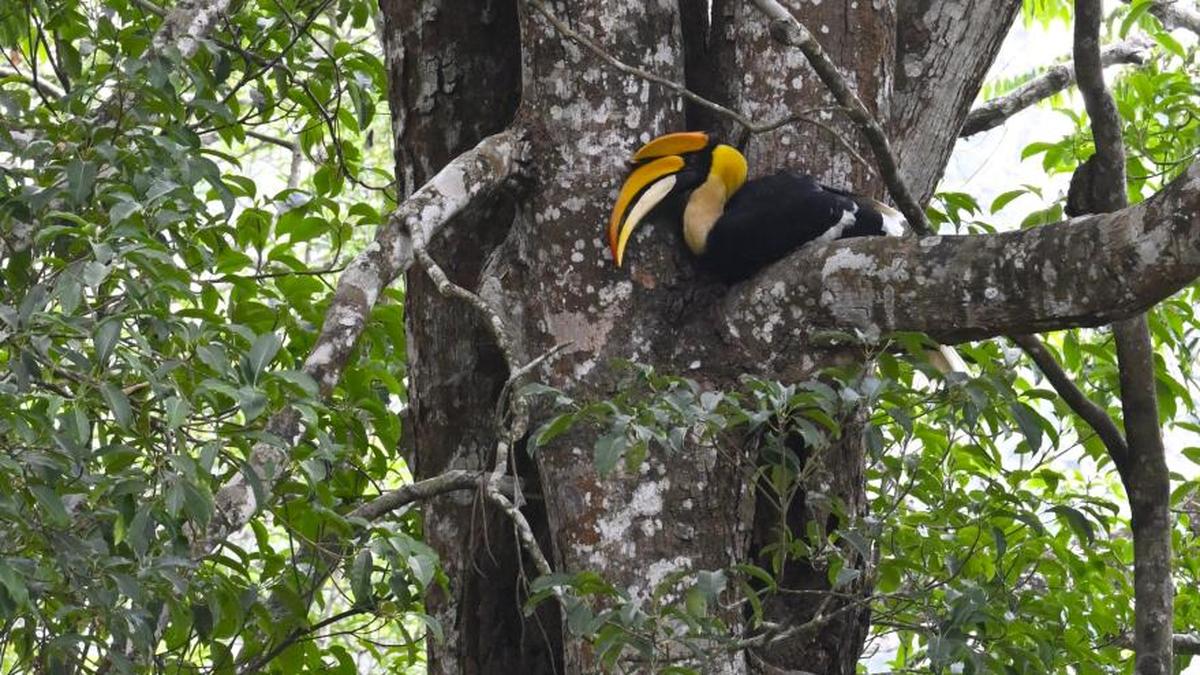
Tamil Nadu’s Valparai tops Western Ghats villages for richness of threatened fauna
The Hindu
With 98 species, Tamil Nadu’s Valparai is at the top of the list of 7,630 villages in the Western Ghats in terms richness of threatened species, as per a GIS-based study conducted by biologists of the Zoological Survey of India (ZSI).
With 98 species, Tamil Nadu’s Valparai is at the top of the list of 7,630 villages in the Western Ghats in terms richness of threatened species, as per a GIS-based study conducted by biologists of the Zoological Survey of India (ZSI).
K.A. Subramanian and Gija Anna Abraham, biologists associated with the Southern Regional Centre of ZSI in Chennai, created a GIS-based database of 512 species of fauna for the study — ‘Village Level Distribution Mapping of Threatened Fauna of the Western Ghats’.
The list included 133 species of fishes, 81 species of birds, 91 species of reptiles, 79 species of amphibians, 47 species of insects, 37 species of mammals, 31 species of malacostraca, seven species of arachnids, four species of gastropods, and one each species of maxillopoda and bivalves.
Out of the 512 species, 27 were Critically Endangered, 131 Endangered, 117 Vulnerable, and 88 Near Threatened species, and the rest of the species were of Least Concern, Data Deficient, or Not Evaluated under the threat categories of the International Union for Conservation of Nature (IUCN). Some species in the non-threatened category in the IUCN Red List, but assessed as regionally threatened, were also included.
Using the QGIS platform, the biologists created village-level distribution maps for the threatened fauna in the Western Ghats States. The village-level richness maps were also joined with protected areas to identify key places and devise better conservation strategies for the threatened fauna. They studied the distribution of the 512 threatened fauna in 7,630 villages of the Western Ghats.
Valparai, a hill station in Coimbatore district, topped the list with 98 species, followed by Kannan Devan Hills in Kerala (83), Greater Bombay (69) Kuttampuzha (64), Pariyaram (61), and Kumily (57) in Kerala. Due to the proximity to protected areas, Valparai, Greater Bombay, and Udhagamandalam were found to have the highest species richness of threatened birds.
State-wise, Kerala topped the list with 354 species of threatened fauna, followed by Tamil Nadu (274), Karnataka (237), Maharashtra (171), Goa (104), and Gujarat (37). While Southern Western Ghats montane rain forests stood first among the ecoregions with 327 species, India Gandhi National Park topped the list of protected areas with 78 species, followed by Periyar Tiger Reserve (77), Rajiv Gandhi National Park (57), Kudremukh National Park (50), Kanyakumari Wildlife Sanctuary, (47), Mudumalai Tiger Reserve (47), Bandipur Tiger Reserve (46), and Parambikulam Tiger Reserve (46).











